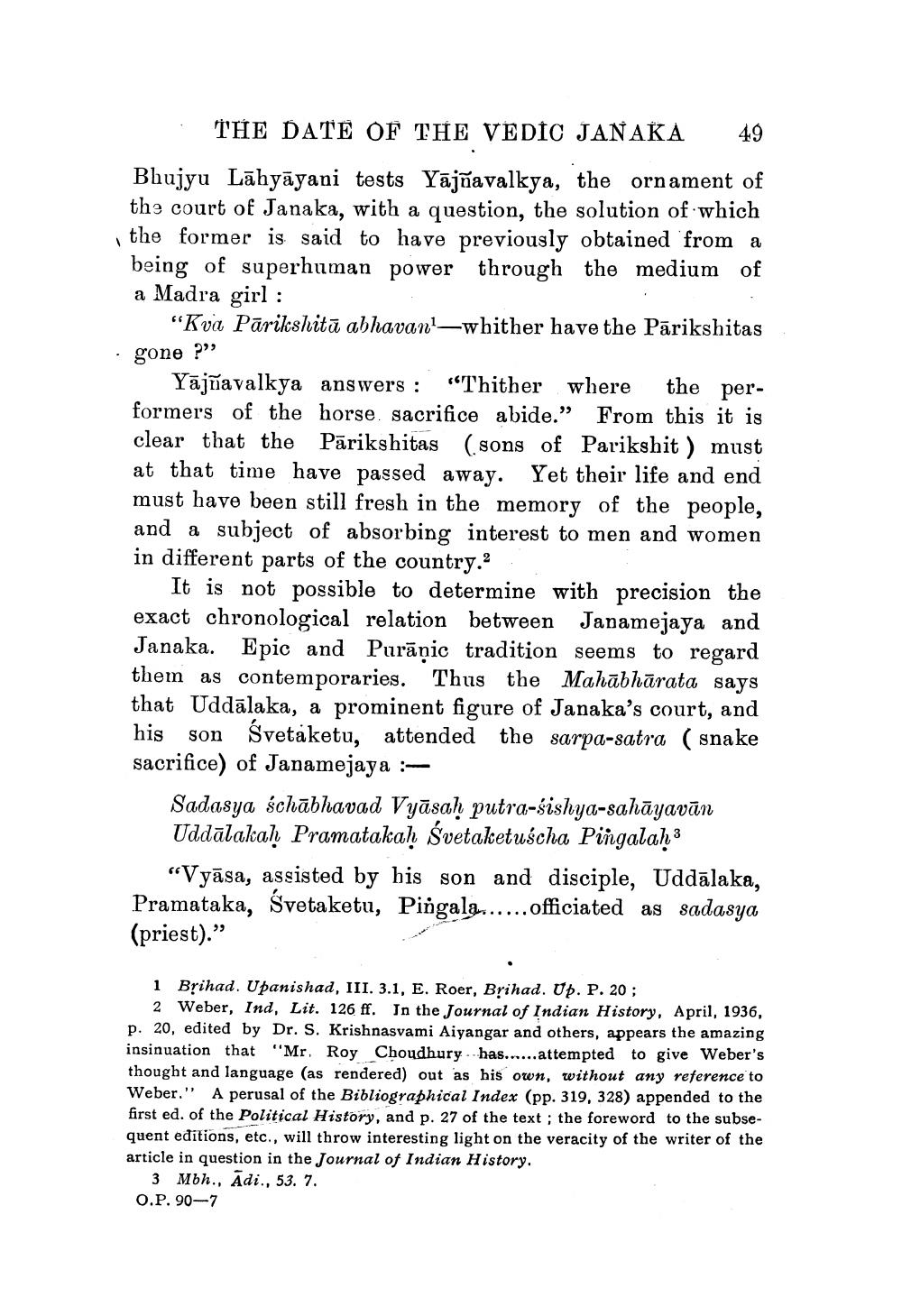________________
THE DATE OF THE VEDIC JANAKA 49 Bhujyu Lāhyāyani tests Yājñavalkya, the ornament of the court of Janaka, with a question, the solution of which the former is said to have previously obtained from a being of superhuman power through the medium of a Madra girl :
"Kva Parikshitā abhavan'whither have the Pārikshitas · gone ?”
Yājñavalkya answers : “Thither where the performers of the horse. sacrifice abide.” From this it is clear that the Parikshitas (.sons of Parikshit ) must at that time have passed away. Yet their life and end must have been still fresh in the memory of the people, and a subject of absorbing interest to men and women in different parts of the country.
It is not possible to determine with precision the exact chronological relation between Janamejaya and Janaka. Epic and Purāṇic tradition seems to regard them as contemporaries. Thus the Mahābhārata says that Uddālaka, a prominent figure of Janaka's court, and his son Svetaketu, attended the sarpa-satra (snake sacrifice) of Janamejaya :
Sadasya śchābhavad Vyāsaḥ putra-sishya-sahāyavān Uddālakah Pramatakah Svetaketuscha Pingalah 3
"Vyāsa, assisted by his son and disciple, Uddālaka, Pramataka, Svetaketu, Pingala...... officiated as sadasya (priest).”
1 Brihad. Upanishad, III. 3.1, E. Roer, Brihad. Up. P. 20;
2 Weber, Ind, Lit. 126 ff. In the Journal of Indian History, April, 1936, p. 20, edited by Dr. S. Krishnasvami Aiyangar and others, appears the amazing insinuation that "Mr. Roy Choudhury has...... attempted to give Weber's thought and language (as rendered) out as his own, without any reference to Weber." A perusal of the Bibliographical Index (pp. 319, 328) appended to the first ed. of the Political History, and p. 27 of the text; the foreword to the subsequent editions, etc., will throw interesting light on the veracity of the writer of the article in question in the Journal of Indian History,
3 Mbh., Adi., 53. 7. O.P. 90-7




